Cantaloupes, with their vibrant orange flesh and sweet aroma, are a beloved summertime treat. Whether you’re a young artist or simply seeking a relaxing pastime, these coloring sheets offer a fantastic opportunity to bring the refreshing essence of this juicy fruit to life on paper. In this article, we’ll explore the educationally fun world of cantaloupe coloring pages, providing you with a variety of printable designs and tips to make your coloring experience both enjoyable and satisfying. So, grab your favorite coloring tools, unleash your artistic spirit, and let’s dive into the colorful world of cantaloupe-themed creativity!
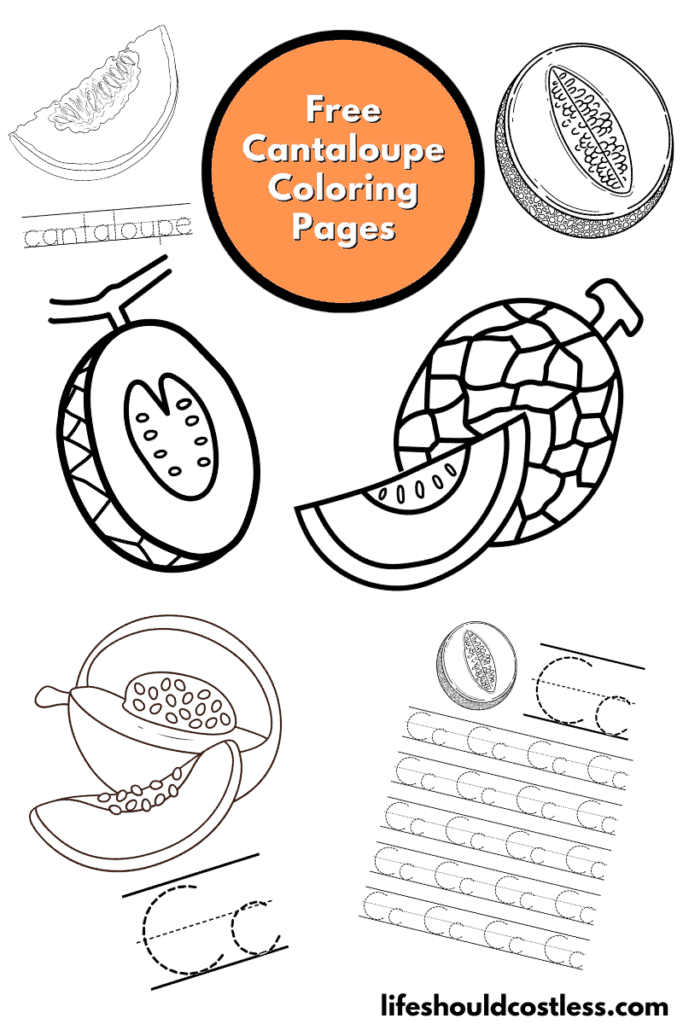
You are welcome to choose the design that resonates with you the most, then download the provided PDF template, print it out, and indulge in coloring to your heart’s content.
Moreover, these designs can also serve as excellent patterns for embroidery or serve as a source of inspiration for creating intricate line tattoos.
Cantaloupe facts
For those who are new to my coloring pages, it’s important to mention that I enjoy providing you with the opportunity to not only color but also learn about the subject matter, turning your coloring experience into an educational adventure.
So, let’s get started!
Cantaloupes are not only delicious but also fascinating.
Here are lots of fun and interesting facts about them:
- Origin: Cantaloupes are believed to have originated in ancient Persia, now modern-day Iran. They have been cultivated for over 2,000 years.
- Botanical Name: The scientific name for cantaloupe is Cucumis melo var. cantalupensis.
- Name Origin: The name “cantaloupe” is thought to have come from the Italian papal town of Cantalupo, where the fruit was cultivated in the 1700s.
- Varieties: There are various varieties of cantaloupes, including the European cantaloupe, the North American cantaloupe, and the Asian cantaloupe. Each has its own unique flavor and appearance.
- Sweetness: Cantaloupes are known for their sweet and refreshing taste. They have a high sugar content and are often referred to as the sweetest of all melons.
- Nutrition: Cantaloupes are low in calories and high in essential nutrients like vitamin C, vitamin A (in the form of beta-carotene), potassium, and folate. They are also a good source of dietary fiber.
- Hydration: Due to their high water content (about 90%), cantaloupes are an excellent fruit choice for staying hydrated, especially during hot summer months.
- Antioxidants: The beta-carotene in cantaloupes acts as a powerful antioxidant, helping to protect cells from damage caused by free radicals and promoting overall health.
- Improves Skin Health: The high vitamin A content in cantaloupes promotes healthy skin by reducing the risk of skin problems and keeping the skin hydrated.
- Supports Eye Health: The beta-carotene in cantaloupes is essential for good vision and can help reduce the risk of age-related macular degeneration.
- Fiber Content: Cantaloupes are a good source of dietary fiber, which aids in digestion, helps maintain a healthy weight, and reduces the risk of constipation.
- Natural Sunscreen: Some studies suggest that the antioxidants in cantaloupes may provide some degree of natural protection against the harmful effects of UV radiation.
- Low Glycemic Index: Cantaloupes have a low glycemic index (GI), making them a suitable fruit for those managing blood sugar levels.
- Versatility: Cantaloupes can be enjoyed in various ways, including eating them fresh, adding them to fruit salads, blending them into smoothies, or even using them in savory dishes like gazpacho.
- Melon Balling: Cantaloupes are often used for a culinary technique known as “melon balling,” where small, round balls of the fruit are scooped out and used for garnishes or in fruit salads.
- Cantaloupe Seeds: While the flesh of the cantaloupe is the most commonly consumed part, the seeds are also edible and packed with nutrients. Some people roast them as a snack.
- Growing Season: Cantaloupes are typically in season during the summer months when they are at their peak flavor and sweetness.
- Cross-Pollination: Cantaloupes are often cross-pollinated by bees, which means that different varieties of melons can sometimes interbreed and produce unique hybrid fruits.
- Aroma: The sweet, musky aroma of a ripe cantaloupe is one of its defining characteristics and is a sign of its readiness to be eaten.
- Global Production: Cantaloupes are grown worldwide, with major producers including China, Turkey, Iran, and the United States.
These fun and interesting facts showcase the rich history, nutritional value, and versatility of cantaloupes, making them a delightful and beneficial addition to any diet.
We learned a lot, but there is definitely more to know about cantaloupes.
If you would like read more about them, here are some other reputable resources to check out:
- https://en.wikipedia.org/wiki/Cantaloupe
- https://snaped.fns.usda.gov/resources/nutrition-education-materials/seasonal-produce-guide/cantaloupe
- https://www.almanac.com/plant/cantaloupes
- https://www.britannica.com/plant/cantaloupe
- To see all of my free printables, go here.
- If you would like to see my index of free printable coloring pages, go here!
- All of my botanicals coloring pages are found here.
- Or, my other fruits coloring pages can be found here.
Tips for coloring
Here are some tips and tricks to help you create vibrant and appealing cantaloupe-themed coloring pages:
- Reference Image: Start by looking at a real cantaloupe or a high-quality image of one. Observing the actual fruit will give you a better understanding of its colors and texture.
- Select the Right Colors: The skin of a cantaloupe is typically a pale to medium orange color with a slightly rough texture. Use various shades of orange and brown to replicate this texture. The flesh of a cantaloupe is a vibrant orange. You can add depth by blending lighter and darker shades of orange and even some yellow to create highlights.
- Layering and Blending: Use colored pencils, markers, or pastels for layering and blending colors. This allows you to achieve a more realistic and textured look. Start with a light layer of color and gradually build up the intensity. Don’t press too hard initially to maintain control over the color.
- Texture and Details: To mimic the rough texture of a cantaloupe’s skin, you can lightly shade in small irregular shapes or dots with a slightly darker orange or brown. Add small details like the stem or the seeds on the surface. Cantaloupe seeds are usually small and dark brown or black.
- Contrast and Shadows: Create contrast by adding shadows to the areas where the fruit curves away from the light source. This will make your cantaloupe appear three-dimensional. Use a slightly darker shade of orange or even a touch of brown for shadows, and blend it smoothly into the base color.
- Highlighting: Highlight the areas where the light hits the cantaloupe with a lighter shade of orange or even a touch of yellow. This will give your drawing a sense of depth and realism.
- Background: Consider adding a simple background, such as a light blue sky or a plain surface, to make your cantaloupe stand out. Though a cantaloupe patch could be a fun background too.
- Experiment and Practice: Don’t be afraid to experiment with different coloring techniques and materials. Practice will help you refine your skills and develop your own unique style.
- Patience and Precision: Take your time and be patient. Coloring is a relaxing activity, and rushing through it may result in less satisfying results. Pay attention to details and be precise in your coloring, especially when adding fine details like seeds.
- Have Fun: Most importantly, have fun with your coloring! Let your creativity flow and enjoy the process of bringing your cantaloupe coloring sheet to life.
Remember that there are no strict rules in coloring, and your interpretation of a cantaloupe can be as unique as you like.
Experiment, learn, and embrace the joy of creating your own colorful cantaloupe masterpiece.
Options For Printing:
Letter C is for cantaloupe writing practice worksheets
*My letter C is for cantaloupe coloring sheet printables are expressly crafted for classroom use and are the sole printable resources on this page that do not require written authorization for public usage.
However, if anyone inquires about their source, kindly provide them with the link to this post.
Your cooperation is greatly appreciated. Thank you!
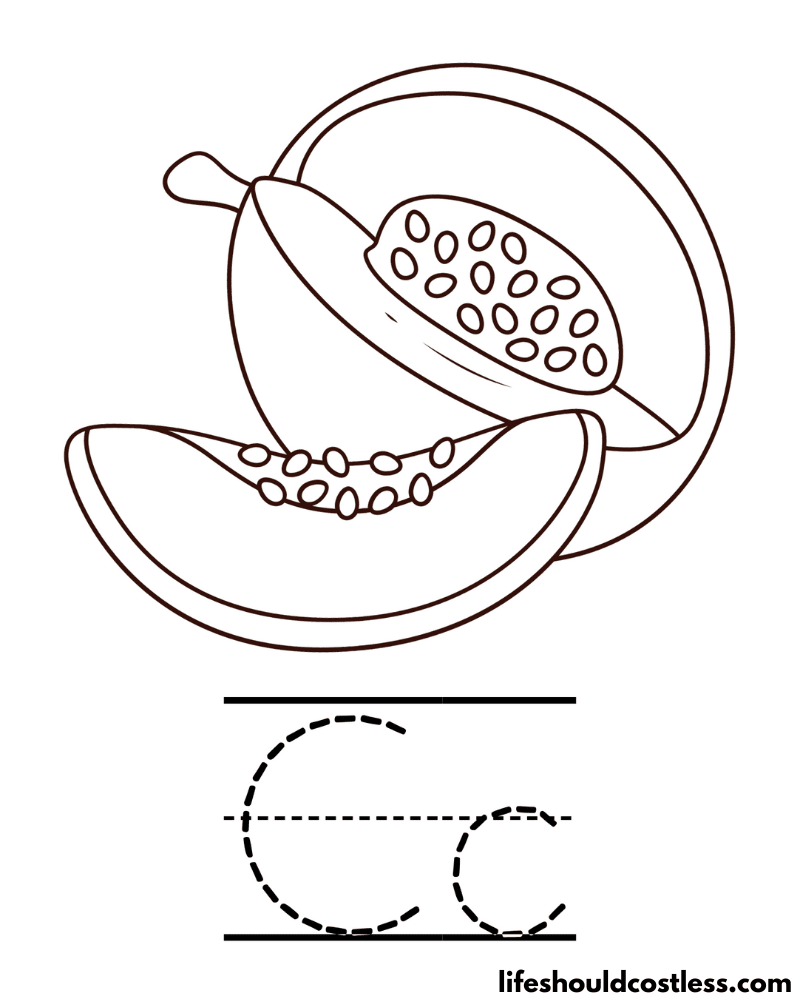

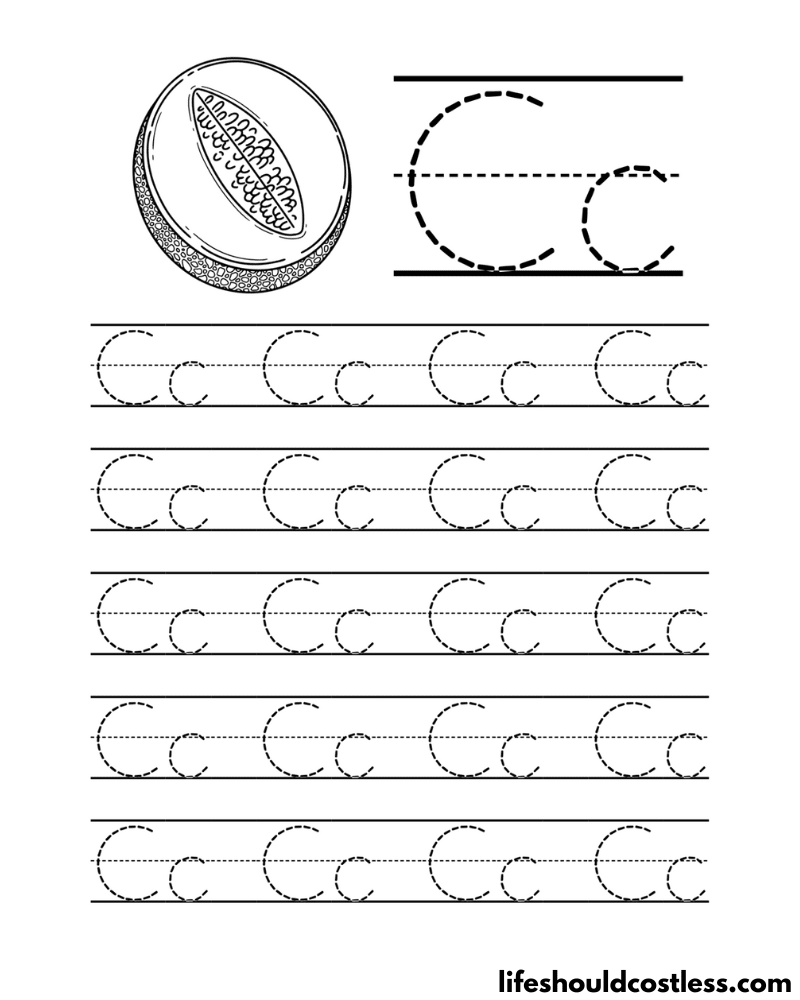
Various cantaloupe designs
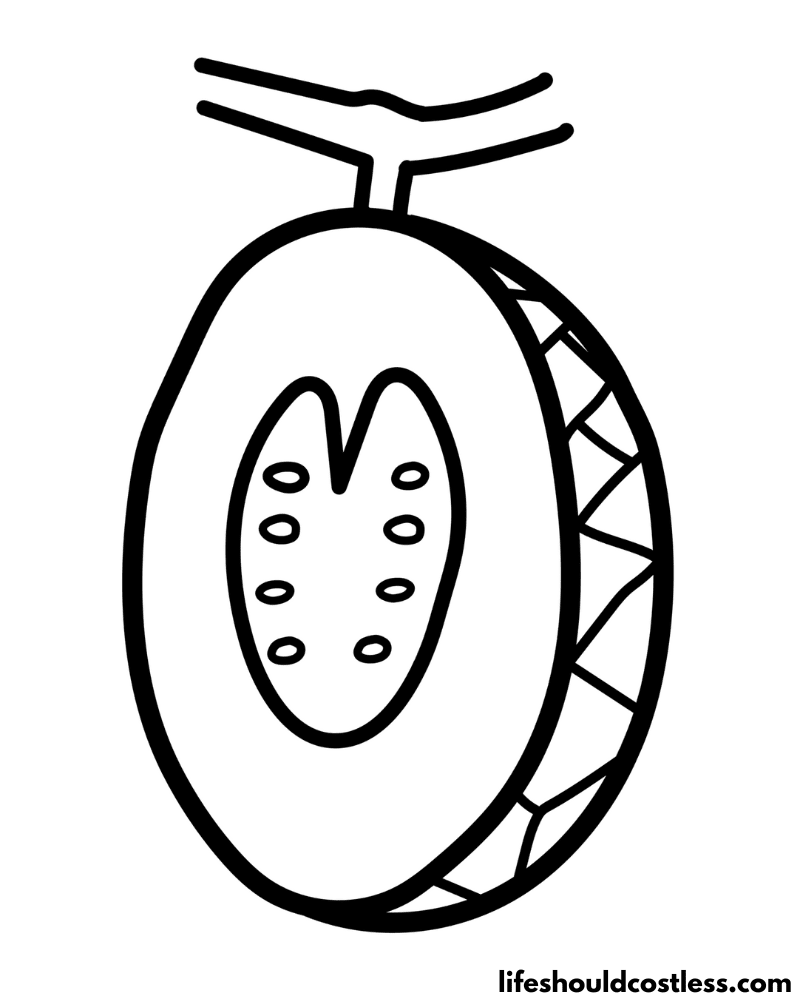
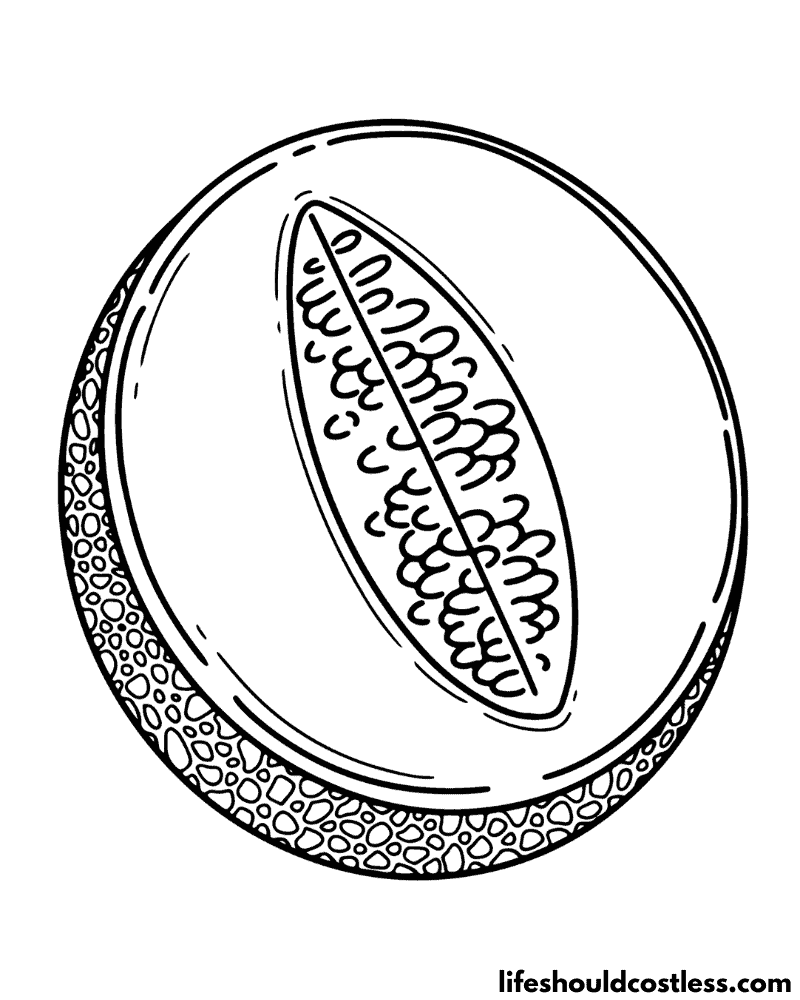
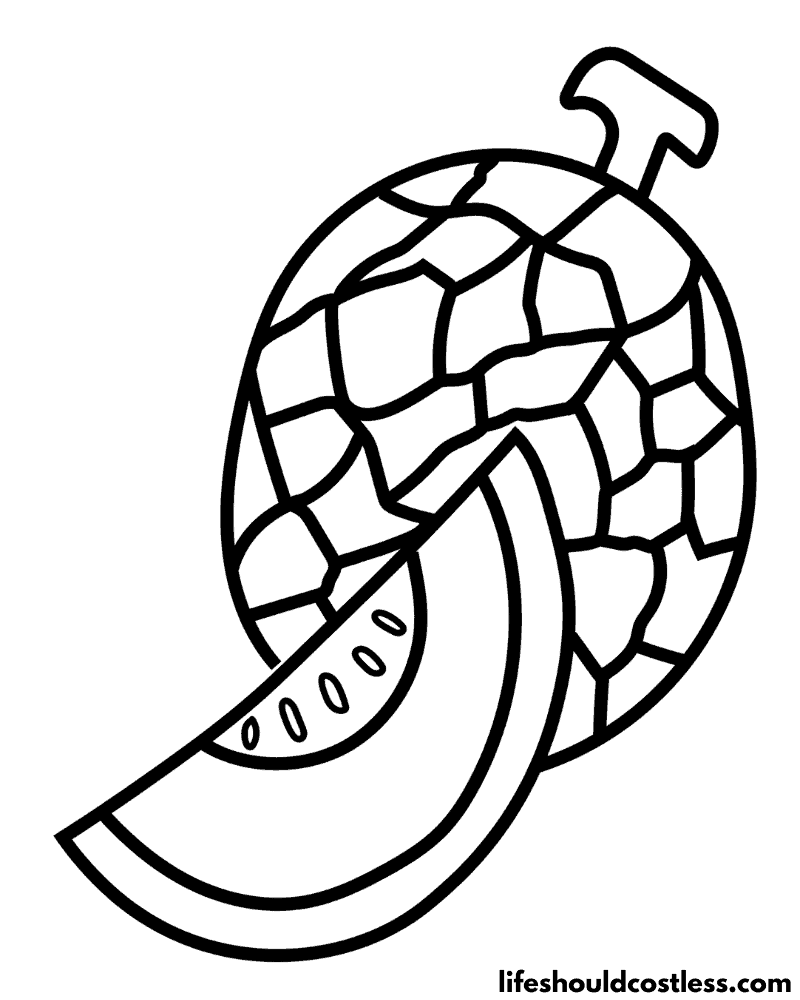
FAQ’s
Cantaloupes are typically orange when they are ripe. The outer skin or rind of a ripe cantaloupe has a pale to medium orange color, while the inner flesh is a vibrant orange. The exact shade of orange can vary slightly depending on the variety of cantaloupe and its ripeness.
*I will add more cantaloupe colour / color questions and answers as the questions get sent to me.
Conclusion
In conclusion, exploring the world of cantaloupe coloring pages has been a delightful journey filled with creative expression and educational insights.
As we’ve ventured into the knowledge of these vibrant and juicy fruits through the strokes of our coloring tools, we’ve not only captured their essence on paper but also learned more about their history, nutritional benefits, and the artistry of replication.
These pages offer a unique way to appreciate the beauty of this delectable fruit while honing our artistic skills.
Whether you’re a budding artist or simply seeking a tranquil escape, these coloring sheets invite you to infuse your imagination with color, creating your very own slice of cantaloupe-inspired art.
As you embark on your coloring adventures, remember that the beauty of art lies not just in the finished product but in the journey of creation itself.
Let the sweet hues of cantaloupes serve as a reminder that creativity knows no bounds, and with each stroke of color, you bring a piece of this fun fruit to life.
Whether you choose to frame your masterpiece or simply savor the experience, know that the world of coloring is a place where imagination and reality beautifully intersect.
Happy coloring!
Thanks so much for stopping by my blog and supporting my endeavors to make people’s lives a little easier/better/more affordable.
If you liked this post, or found it helpful in any way, please make sure to share it with your family, friends, and co-workers via social media.
Or you could even send them the direct link via email. Whichever way you choose to spread the love, I super appreciate it! ~Sarah

How To Follow & Support This Site
- If you would like to subscribe to my email list, go here.
- Make sure to follow along via social media, by going here.
- If you would like to learn how to really show your support to this site (at no cost to you), go here.
- If you would like to make a direct donation to the site, go here.
Check out my other free printables
- To see all of my free printables, go here.
- If you would like to see my index of free printable coloring pages, go here!
- All of my botanicals coloring pages are found here.
- Or, my other fruits coloring pages can be found here.
Otherwise, here are direct links to several of my other related posts that you’re also going to love:
Botanicals / Fruits
Botanicals / Floral & Misc
Other good resources for a printable cantaloupe
- https://www.supercoloring.com/pages/cantaloupe
- https://www.coloringpages101.com/Melon-coloring-pages/95021-Melons-Cantaloupe-coloring-page
- https://www.ultracoloringpages.com/p/cantaloupe-coloring-page/fb07056e6e8990cce07e7b612b96941f
*This post was originally shared to this blog on 11/06/2023, and has since been updated to improve user experience, add video instruction, as well as to make it as shareable as possible across the social medias.
**Please note that I do try my hardest to provide factual, but easy to understand, information about each topic. If you notice a discrepancy in my coloring pages, facts, or see something that you deem “misinformation/incorrect” please make sure to notify me about it. I would prefer that you send me an email with a link to a more reputable resource on that subject, so that I can correct it as soon as possible. Thanks so much for helping this site become the best that it can be!
***Resources from djinkers were used in the production of this article.
***Resources from djinkers were used in the production of this article.
